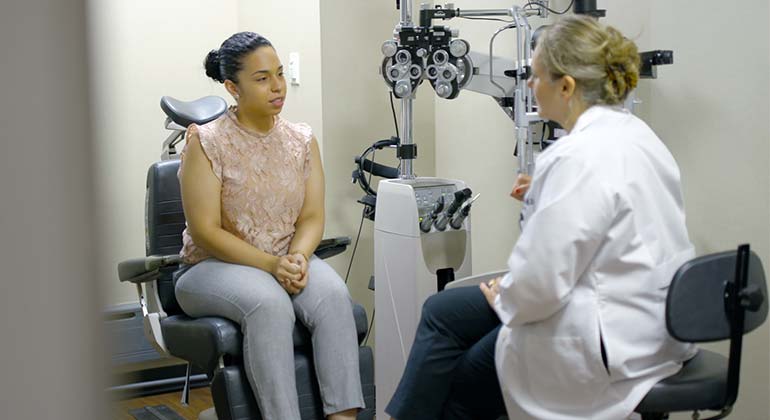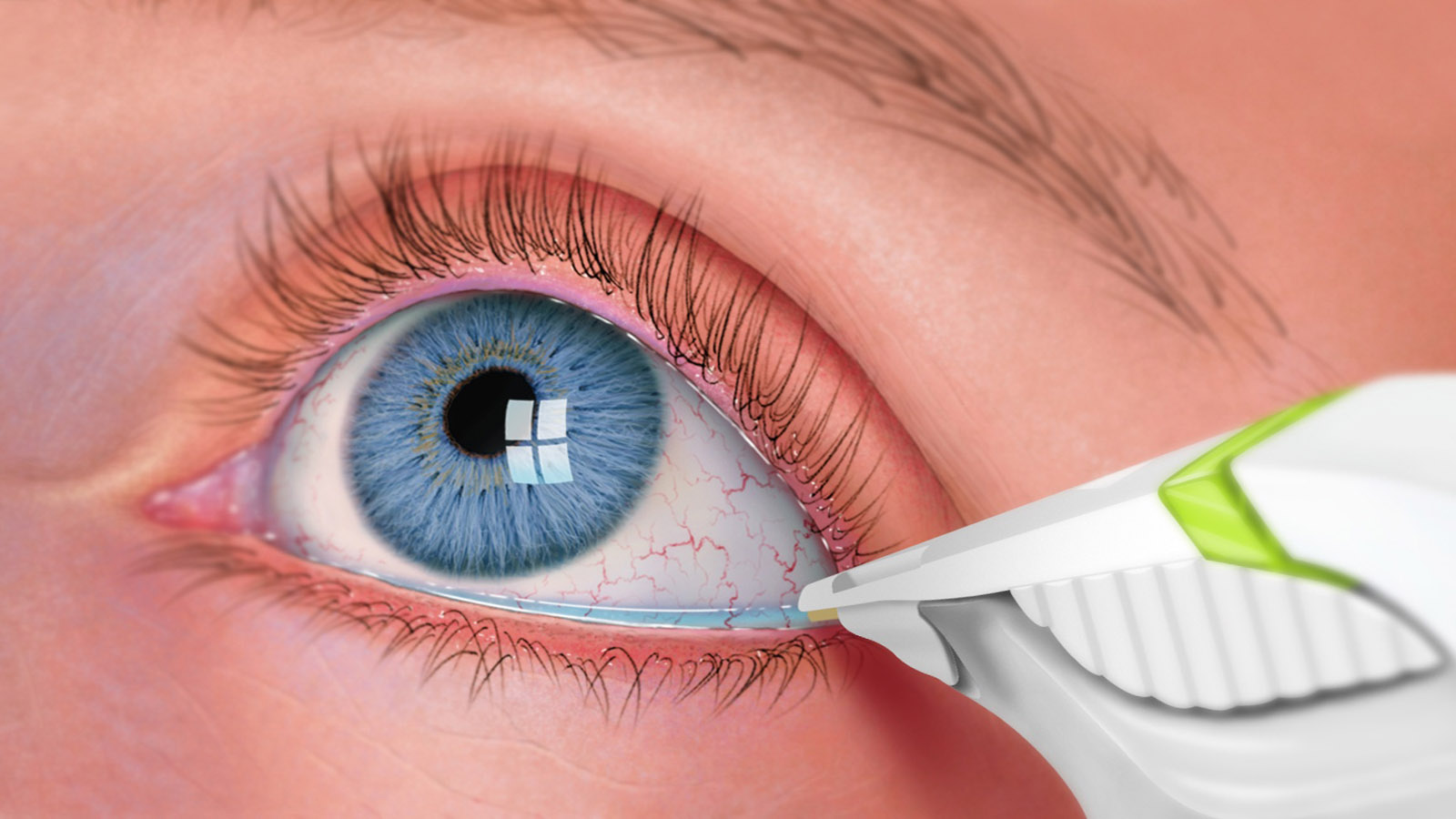Convenient Glaucoma Service Near Me: Check Out Our Experienced Clinic
Convenient Glaucoma Service Near Me: Check Out Our Experienced Clinic
Blog Article
Exploring the State-of-the-Art Technologies Made Use Of for Detecting and Dealing With Eye Problems
In the world of ophthalmology, the development of innovation has actually dramatically improved the tools available for detecting and treating various eye problems. From sophisticated imaging technologies that provide detailed understandings right into ocular frameworks to robotic-assisted surgical treatments that use unequaled precision, the landscape of eye treatment is continuously advancing. With the combination of synthetic knowledge in diagnostics, gene treatment developments, and virtual truth rehabilitation, the opportunities for boosting individual outcomes are broadening at a rapid speed. The convergence of these innovative technologies holds the assurance of transforming the area of ophthalmology, providing brand-new methods for customized and efficient treatments.

Advanced Imaging Technologies
Advanced Imaging Technologies have reinvented the field of ophthalmology by giving accurate and thorough visualization of the eye structures. Optical Comprehensibility Tomography (OCT) stands out as a key innovation in this world. OCT utilizes light waves to record high-resolution cross-sectional images of the retina, permitting for the identification of minute structural adjustments. This non-invasive technique help in the early discovery and surveillance of different eye problems such as macular deterioration, diabetic retinopathy, and glaucoma.
Furthermore, Fundus Digital photography is another vital device in ocular imaging. This strategy involves capturing in-depth photos of the rear of the eye, including the retina and optic disc. Fundus Photography assists in documenting the progression of eye illness, reviewing therapy efficacy, and educating patients about their eye health and wellness.

Robotic-Assisted Surgery
Robotic-assisted procedures have dramatically progressed the capabilities of ophthalmic surgical treatment, ushering in a new age of accuracy and efficiency in dealing with different eye problems. By incorporating robot modern technology right into procedures, eye doctors can attain unmatched precision and control, resulting in enhanced client results.
One of the primary benefits of robotic-assisted surgery in ophthalmology is the enhanced mastery and security it uses to specialists. The robot arms can execute exact activities with a high degree of accuracy, enabling delicate treatments with very little invasiveness. This level of accuracy is specifically beneficial in surgeries entailing the retina, where also minor errors can have significant effects for a person's vision.
Moreover, robotic-assisted surgical systems offer real-time imaging and feedback to the doctor, enabling them to make informed choices during the procedure. This technology boosts the specialist's situational awareness and enables changes to be made quickly, ensuring optimum results for the person.
Artificial Intelligence in Diagnostics
With the advancement of innovative technologies read boosting surgical accuracy in ophthalmic treatments, the integration of Artificial Knowledge in diagnostics has become a critical advancement revolutionizing the area of eye care. Expert System (AI) formulas are being increasingly used to analyze complicated information from imaging innovations like optical comprehensibility tomography (OCT) and fundus photography to assist in the very early detection and precise medical diagnosis of various eye problems. These AI systems can successfully determine patterns and abnormalities in images that may not be noticeable to the human eye, enabling quicker medical diagnosis and treatment preparation.
AI formulas can additionally predict disease progression, suggest individualized therapy strategies, and examine the performance of treatments. By streamlining the diagnostic process, AI not only enhances the effectiveness of eye care experts however likewise enhances individual outcomes by enabling timely treatments. As AI remains to development, its duty in diagnostics is anticipated to broaden, using brand-new opportunities for very early treatment and personalized therapy in the area of ophthalmology.
Genetics Treatment Advancements
In the world of sensory developments, recent strides in gene treatment technologies have actually stimulated significant interest among scientists and medical care experts alike. Genetics therapy holds tremendous guarantee in revolutionizing the therapy of various eye conditions by targeting the hidden genetic causes. By presenting genetic material right into cells to compensate for irregular genes or to supply an absent gene, genetics therapy uses an individualized strategy to dealing with acquired eye disorders such as retinitis pigmentosa, Leber hereditary amaurosis, and others that were formerly considered untreatable.

As study in gene therapy proceeds to breakthrough, the capacity for tailored treatments for a bigger array of eye conditions grows, supplying brand-new hope for people with hereditary eye diseases.
Digital Truth Rehabilitation
Virtual fact rehab has actually become an advanced approach in boosting the healing and rehabilitation procedures for individuals with numerous visual impairments. refractive surgeries in al. By imitating real-world settings through immersive innovation, digital fact provides an unique visite site platform for vision therapy and rehabilitation. This ingenious technique makes it possible for people to participate in interactive workouts and activities made to enhance visual skill, deepness perception, eye sychronisation, and total visual performance
One key benefit of digital reality recovery is its ability to personalize therapy programs based on the certain requirements and abilities of each client. Via real-time feedback and monitoring, health care specialists can track progress, change treatments, and provide individualized treatment to optimize results. In addition, digital reality innovation can develop a regulated and safe space for individuals to exercise aesthetic jobs, overcome challenges, and develop self-confidence in a digital setup before transitioning to real-world scenarios.
Final Thought
In final thought, the innovations in imaging innovations, robotic-assisted surgeries, expert system diagnostics, genetics treatment technologies, and that site virtual reality rehabilitation have considerably enhanced the diagnosis and treatment of eye conditions. glaucoma service near me. These modern modern technologies have revolutionized the area of ophthalmology, allowing for even more reliable and precise procedures. As innovation remains to evolve, the future of eye care looks encouraging with the possibility for much more innovative solutions to improve person end results
In the world of ophthalmology, the development of technology has actually dramatically improved the tools available for detecting and dealing with different eye conditions. Fundus Digital photography helps in documenting the development of eye diseases, reviewing treatment efficiency, and informing clients about their eye wellness.
Man-made Intelligence (AI) formulas are being progressively utilized to assess complicated data from imaging technologies like optical comprehensibility tomography (OCT) and fundus digital photography to aid in the early detection and precise diagnosis of numerous eye conditions.In verdict, the improvements in imaging technologies, robotic-assisted surgeries, man-made intelligence diagnostics, gene treatment developments, and digital truth recovery have dramatically improved the medical diagnosis and treatment of eye problems. As modern technology proceeds to evolve, the future of eye care looks encouraging with the capacity for also more ingenious solutions to enhance person outcomes.
Report this page